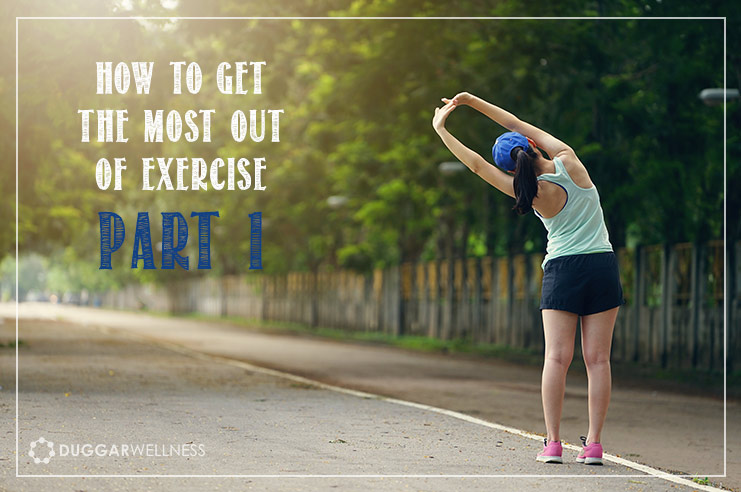Good Results Start with Good Questions
What is the best way to exercise? Is exercise always good? How much is enough? I get these questions a lot from patients and friends. While they are pretty good questions that have pretty good answers available, before I can begin to share what I know I need to turn around and ask even better ones.
What are Your Objectives?
It is really important to be clear on what we are trying to do with exercise because that will determine the details of how we construct a plan. Where are we starting from? Are you already in pretty good shape but you want to improve your athletic performance? Are you just trying to get back in the action after letting your lifestyle get away from you for a few months or years? Is weight loss a top priority for you? Do you want to look a certain way? Do you want to feel a certain way? Most people unfortunately don’t have any real objective in mind and so they don’t succeed. As one of my mentors often says, “fuzzy targets don’t get hit”.
What about the element of “Time”?
How long have you been in the process of “de-conditioning”? How long do you anticipate it will take to dig out of that hole (remember, flash-in-the-pan results have a poor record of being sustainable, so faster isn’t always better). Last but not least, “how much time do you have available in your day or week to devote to increased movement?”
How are you planning to track your progress?
We all need some positive motivation when we try to tackle something that is difficult. The good news is that our bodies are amazing in their ability to adapt us to our environment and to the ever changing demands we place on them. In fact, that adaptation is what we are counting on for weight improvement, muscle development and cardiovascular fitness, flexibility. That being said, the adaptation process isn’t always something that we see. There are benefits to exercise that are “under the surface”. A dramatic change in weight and body composition is pretty visible, but what happens if that isn’t changing as quickly as you might have been led to believe from the late night infomercials? Are you going to quit and give up?
There is no single answer that is appropriate for everybody but I would strongly suggest that you find 3 or 4 indicators that you can use to track your progress. I’d suggest some “soft signs” like overall energy through the day, mental clarity or how easy it is to go up the stairs or how your pants fit you, as well as some more concrete signs like getting your body fat percentage, measuring body circumference, getting your VO2 Max levels tested or tracking how much weight you can lift.
Just about anything we do to increase our movement and exercise will have a positive impact on our health. The only things we have to guard against are injury and over-training, both of which negate the stress relieving aspects of exercise into a stress producing effect.
In part two, I’ll share some suggestions to improve your results:time ratio.
 160 N Main, Bountiful, UT 84010
160 N Main, Bountiful, UT 84010  801-677-7878
801-677-7878

2 responses to “How To Get the Most Out of Exercise (Part 1)”
[…] part one of this series I mentioned that each of us may have a unique goal and objective for exercising. We […]
[…] already got! If you need some suggestions on how to get moving, check out this article, or this one, or just google “how to increase your daily activity” and you’ll find dozens of […]